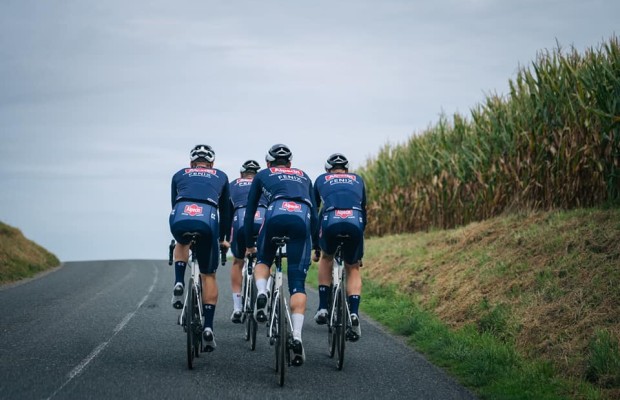In the morning or in the afternoon? What time is better to train?
If we ask among cyclists, we realize that there is no consensus on what is the best time to train or whether it is preferable to train in the morning or in the afternoon.
In most cases, preferences are determined by each person's customs imposed by family and work obligations. However, there are differences that can make one time more convenient than another, as long as we can choose, of course.

The best time to train in cycling
Before deciding on the best time to train, we must talk about circadian rhythms. We all function based on a kind of biological clock that regulates the body's activity throughout the day. This internal clock is synchronized using daylight and determines parameters of the body such as levels of different hormones, body temperature, or sleep cycles.
RECOMENDADO
It is therefore logical that we try to incorporate our workouts during the phase of the day when the body is most active and we can get the best results from it.

Based on this, it is widely accepted that the hours when the body has a higher cardiovascular efficiency are between 5:00 p.m. and 7:00 p.m. However, circadian rhythms are not the same for everyone. We all know people who wake up early without an alarm clock, are tremendously active from early in the morning but, after lunchtime, they start to fade to end up early in bed. Or, conversely, those who like to work until late at night, but are not themselves until almost noon.
Therefore, a general recommendation cannot be established for everyone and we must find the optimal time for our workouts based on our own circadian rhythm.
On the contrary, training outside the hours when the body is most active can result in those sessions where we feel like we have no legs, we feel tired, and every change of pace costs us twice as much.
Training in the morning
Mornings are usually the ideal time for those who have no trouble getting up early and feel active from the moment they get out of bed. Both for them, and for those who don't, adding activity at this time forces the body to activate so it gives us a good dose of energy for the rest of the day.
Hormonally, the early hours of the day usually coincide with higher levels of testosterone, so it is a good time to make the most of strength training.

Furthermore, training early in the morning gives us the opportunity to incorporate into our routine some fasted rides. A type of training that is somewhat controversial but apparently can help improve fat metabolism.
When training in the morning, we must ensure that the night before our diet includes a sufficient intake of carbohydrates to have enough energy reserves to face the session. We must also forget about watching the series or movie of the moment and go to bed early enough to sleep and recover properly.
Finally, an important detail: after the night's inactivity, muscles and joints are stiffer and metabolism is slowed down. Put more emphasis on the warm-up phase to minimize the risk of injuries.
Lunchtime
Many people with split shifts at work often take advantage of the lunch break to fit in their workouts. An option that ensures that the body is fully active, both for night owls and early birds.
Training at this time allows us in many cases to recharge and release the accumulated stress during the morning work. Additionally, it is often an activity that we can share with office colleagues which often results in a better work environment and greater empathy.

However, here we have the limitation of available time, an aspect that we can deal with if we have a good training plan: it is not the same to go out for intervals for an hour as it is to go out for a leisurely ride.
Heat is another issue we may encounter during the summer months, although, on the contrary, in winter it allows us to enjoy training in daylight.
In the afternoon
As we explained at the beginning, this is the optimal part of the day for the vast majority of people. It is when the body is fully active and the muscles acquire ideal mobility and temperature to perform at their best.
Just like with lunchtime, training after work allows us to disconnect from our work activity and redirect the stress of the day. However, in many cases, many people arrive exhausted at this time of day, except in very physical jobs, a feeling that is often more mental than anything else but requires great doses of motivation to complete the daily workout.
In any case, we should not extend the evening sessions too much as we must allow the body to lower its activation level after training or it is very likely that we will have problems falling asleep.

And you, what time do you usually go out to train? Will you try from now on to ride at the best time to train, between 5:00 p.m. and 7:00 p.m.? Let us know, in the comments of this article or on our social networks.





